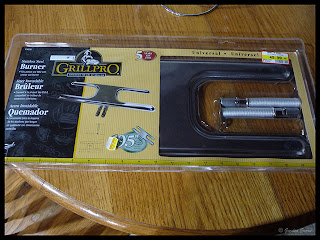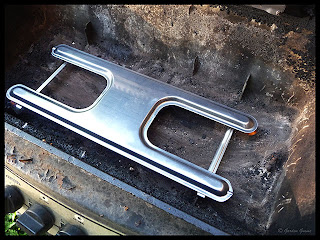I make most of the candles we burn in our home using either soy wax or 100% beeswax. Both of these are natural products that do not contain any colourants or scents. There are two reasons I like using these waxes for candle making. First the are natural waxes not petroleum based wax like paraffin wax is. Second unlike paraffin wax both soy wax and beeswax burn clean. Beeswax has additional properties as well. It has a mild honey scent that smells lovely but burning beeswax candles is said to actually clean the air. Burning beeswax candles is also said to have health benefits such as reducing the severity of or even eliminating sinus attacks.
Candles in a Jar have become quite popular. The problem with most purchased candles in jars is they are heavily scented. The scent can cause problems for those with allergies, asthma and other respiratory problems. At the same time what many don't realize is these scents pollute indoor air. They are often heavily dyed another source of indoor air pollution. Finally purchased candles in jars tend to be over priced going for as high as $10 per candle. Both beeswax and soy wax can be used to make candles in jars.
Pictured is one of the beeswax candles in a jar I made. I used a fancier, squatty 250 ml (half-pint) mason jelly jar and decorative two-piece lid. The jelly jars with decorative lids can be bought in a 4 - pk or you can buy a 12-pk of regular mason jars with plain either gold or silver tone lids. Traditionally the two-piece lids have been gold tone but recently Bernardin has moved to silver tone lids. The decorative lids can be bought separately as well but the regular lids that come with the jars can be used. Both jars and lids can be found in the canning section of any store that sells canning supplies. There are larger canning jars but the best size for candles in jars is the 250 ml size.
Materials
1 mason* jar per candle
1 two-piece lid
1¼ c melted wax per candle
1 3-inch wick holder/wick per candle
sauce pan
metal can for melting the wax
Place jars in oven then set oven to 80ºC (175ºF) to warm this. This will prevent breakage when pouring the hot wax into the jars. Cover your work surface with newspaper to protect from wax drips. Place wax in metal can. Pour enough water in the sauce pan to come half way up the outside of the can. Bring the water to a boil then reduce heat to a simmer while moving the metal can to allow the wax to melt on the inside. Add more wax if desired. Once the wax is melted place one wick with holder into a warm jar. Carefully pour the hot wax into the jar. Centre the wick. As the wax cools it will shrink and the area around the wick will sink down (concave). Top up the candle with more hot wax while the candle is still warm. Set aside to cool. Once cooled, place the two-piece lid on the jar. The candle is now ready for storage, gift giving and using.
Pictured is a beeswax
candle in the jar ready for burning. Before burning the candle the two piece lid should be removed. Trim the wick to ¼- inch before lighting the candle. Place the ring of the two-piece lid back on the candle jar. Place the candle on the lid portion. Light the candle.
When burning use all safety precautions such as keeping away from out of reach of children and pets as well as away from combustible materials like curtains. Never leave the candle burning unattended. Do not let the candle burn down to lower than ¼ - inch from the bottom of the candle as this can cause the jar to overheat and break as well as cause scotching of furniture. The remaining candle wax can be removed from the jar then the washed jar can be re-used for another candle.
Garden Gnome
©2006-2010
































